United States 🇺🇸 Trout Streams of North Georgia
Trout Streams of North Georgia
United States 🇺🇸
Wild streams, wild trout, pure bliss
Water
Stream
Lines
WF Floating
Rods
AFTMA 1 to AFTMA 4
Species
Brook trout, Brown Trout, Rainbow Trout
Best months
Apr, May, Jun, Jul, Oct, Nov, Dec
"A big thanks to Georgia Wild Trout for all the information about this location. If you're looking for a guide that can make your day a success on these streams, definitely check them out!
North Georgia's trout streams present a rich tapestry of fishing opportunities for anglers. The region's waters are home to a diverse range of trout species, sizes, and populations. Anglers can expect to encounter both stocked and wild trout across various streams, each presenting its own set of challenges. For beginners, navigating these waters can seem daunting due to the abundance of outdated or misleading information. It's essential to understand that stocked and wild trout differ significantly in behavior, necessitating distinct approaches for successful fly fishing.
Trout streams in Georgia can be broadly classified into four groups: stocked rivers, small stocked streams, wild streams, and trophy trout waters. This classification helps anglers decide where to focus their efforts, depending on their preferences and fishing goals.
Stocked Trout Streams
Most of Georgia's public trout streams are managed for put-and-take fishing, with regular stockings throughout the year or specifically during cooler months from October to July. These locations tend to attract the most fishing pressure, often recommended by online searches and forums. Streams like Wildcat Creek and the Etowah River are popular but can quickly be depleted of trout after stocking, especially by the weekend. Finding success in these waters may require venturing further from parking areas to less pressured sections.
Delayed Harvest Trout Streams
Georgia also offers Delayed Harvest Trout Streams, such as sections of Amicalola Creek and the Toccoa River, which are stocked in November and managed as catch-and-release until May. These streams provide excellent early season fishing but can become crowded. As the season progresses, trout in these waters become more challenging to catch, requiring more refined techniques and smaller flies for success.
Less Pressured Streams
In addition to the heavily stocked waters, North Georgia has numerous streams stocked during cooler weather but with fewer trout. These less pressured streams can be ideal for encountering uncaught stockers. They offer a great learning environment for novice fly anglers, demanding stealth and shorter casts due to their smaller size.
Tips for Success

Anglers should stay mobile, exploring as much of the stream as possible to increase their chances of success. The Georgia Department of Natural Resources provides a Trout Stocking Schedule, which is an invaluable resource for planning fishing trips. While ""junk"" flies can be effective, natural patterns like hare’s ear nymphs or pheasant tail nymphs are also recommended for attracting both stocked and wild trout.
Staying mobile is key to exploring a high amount of hotspots
Some of Georgia's most beautiful trout streams go to fly fishing
North Georgia's Southern Appalachia is dotted with wild trout streams, characterized by their smaller size and rapid flow compared to stocked counterparts. These freestone streams offer a unique challenge, particularly to beginners, due to the need for more stealth and careful fly presentation. Despite these challenges, the abundance of hungry wild trout from March to December makes the effort worthwhile, with dry flies being a successful choice almost year-round.
Locating wild trout streams
The U.S. Forestry Service manages several tracts of land across North Georgia, making access to these streams relatively straightforward. Additionally, Trout Routes offers valuable resources for finding both wild and stocked trout streams. The headwaters of major rivers are prime locations for wild trout, with several notable areas offering rich fishing experiences:
Cohutta Wilderness: Situated in the northwest, this vast area boasts miles of pristine creeks teeming with wild rainbow and brown trout, offering a remote fishing adventure.
Toccoa River Drainages: To the east, headwater creeks like Skeenah Creek and Noontootla Creek harbor wild brook, rainbow, and brown trout. Rainbow trout dominate these waters, but native brook trout can be found at higher elevations.
Etowah, Chestatee, and Nottely River Headwaters: Near Dahlonega, these streams support diverse trout populations. Anglers can explore various creeks within these drainages, each potentially housing different trout species.
Northeast Georgia Watersheds: The Upper Chattahoochee, Hiwassee, Tallulah, and Chattooga Rivers offer habitats for all three trout species, with rainbow and brown trout commonly found in smaller streams and tributaries.
Exploring these areas not only promises a variety of trout species but also an adventure into the heart of Georgia's natural beauty. Each stream and watershed provides a unique fishing experience, with surprises around every bend for those willing to explore.
A beautiful brownie
Zooming in, here are some of the creeks and streams that are worth fly fishing:
Boggs Creek
Located north of Dahlonega along Hwy 19, Boggs Creek and its campground provide excellent access to heavily stocked waters, outperforming nearby streams like Frogtown Creek. The creek is known for its slick rock outcroppings and a transition to more wild rainbow trout as you move upstream, offering a mix of fishing experiences in a scenic setting.
Helton Creek
Flowing towards North Dahlonega and Blood Mountain, Helton Creek boasts both wild and stocked trout. The creek, surrounded by dense rhododendrons, offers limited public access but is notable for its beautiful waterfalls and opportunities for tight quarters casting.
Turniptown Creek
A tributary of the Ellijay River, Turniptown Creek is stocked by both the DNR and local homeowners. Despite much of it being on private land, public access is available in the upper section. The creek is known for a consistent trout population and is located near a cabin owned by former president Jimmy Carter.
Coopers Creek
Situated in the Coopers Creek WMA, this creek is a popular destination due to numerous campgrounds and easy access. It receives significant stocking, making trout abundant but sometimes challenging to find due to local fishing pressure.
Dicks Creek
Dicks Creek is a favorite in the Dahlonega area, heavily stocked and bustling with activity during warmer months. Anglers can find solitude and wild trout upstream, with the headwaters near Blood Mountain offering secluded fishing opportunities.
Rock Creek
Close to Blue Ridge, Rock Creek experiences similar pressure to Coopers and Dicks Creeks. Despite fewer camping options, it remains a competitive spot for anglers, stretching from the Toccoa River to the Chattahoochee National Forest Trout Hatchery.
Low Gap and Jasus Creek
Both creeks are regularly stocked and quickly fished out near campgrounds. Venturing away from these areas, anglers can discover wild trout amidst the dominant creek chubs and shiners. Jasus Creek, slightly larger than Low Gap, offers better cover and potential for holdover trout.
Soapstone Creek
Below Brasstown Bald, Soapstone Creek offers excellent fly fishing with less pressure compared to other stocked creeks. The creek boasts a population of wild trout in its upper reaches, providing consistent fishing opportunities.
Amicalola Creek
Known for its accessible waterfall, Amicalola Creek is divided into three sections for trout fishing. The lower section features the Delayed Harvest, while the middle section is regularly stocked. Wild trout can be found in the upper tributaries, with less pressure away from the main access points.
Warwoman Creek
A tributary of the Chattooga River, Warwoman Creek offers a mix of wild and stocked trout. Stocked sections near Clayton experience higher pressure, but the upper reaches remain a more serene environment for anglers seeking solitude.
When fishing in the North Georgia Mountains, the choice of flies can significantly impact your success, especially when targeting the area's diverse trout populations. Here’s a straightforward guide to selecting the right flies and understanding local fishing regulations.
Small stream, wild trout, light gear 👍
Fly Selection for North Georgia Trout
Seasonal behavior of wild trout
During the colder months of January to March, wild trout are less likely to feed on the surface, except during sporadic midge or Blue Wing Olive hatches. This period requires a bit more patience and timing to catch these elusive fish.
Tips for flies
Stocked Trout Flies: For attracting stocked trout, simple ""junk"" flies like mop flies, squirmy worms, and egg patterns are highly effective. These flies are known to catch the trout's attention and encourage bites.
Wild and Skittish Trout Flies: For subsurface feeding wild trout or cautious stocked trout, natural imitations such as hare's ear nymphs, pheasant tail nymphs, perdigons, or Walt's worms are recommended. These mimic the local aquatic life closely and can be very effective.
Surface Flies: For surface feeding, hoppers are great for suspension rigs and appealing to hungry trout. For a more consistent natural diet imitation, flies like stimulators, elk hair caddis, and parachute Adams variations are excellent choices, covering a wide range of insect life found in North Georgia's streams.
Despite the absence of blanket hatches, North Georgia waters are teeming with a variety of insects for most of the year, making a diverse fly selection essential.
Tailwater Fly Selection: In tailwater areas, expect to encounter smaller insects, necessitating flies like zebra midges, small Adams, Griffith's gnats, and other tiny midge imitations in size 20 or smaller. Summer hatches typically occur during low light, while cooler month hatches can happen throughout the day, influenced by dam generation schedules.
Georgia Trout Fishing Regulations
Licensing: Anyone over 16 years old fishing in designated trout streams in Georgia must have a valid fishing license and trout stamp.
Season and Precautions: Trout streams are open to fishing year-round, though fishing during hot summer months should be approached with caution to avoid stressing the trout.
Age Restrictions: Moccasin Creek is unique for having an age restriction, allowing only anglers under 12 years old.
Artificial Only Waters: Certain streams, including parts of the Chattahoochee River and others like Stanley Creek and Coleman River, are designated for artificial lures only, excluding all scented lures.
Size and Catch Limits: Georgia's general trout limit is eight per person without a size restriction. However, some streams have special designations as catch-and-release or enforce a minimum size limit of sixteen inches. Always consult the Georgia Department of Natural Resources (DNR) regulations page for the latest information before fishing."
Fish Species
There might be more species you can catch in this location or in the area, but the current page and description focusses on these fish species.
Brook trout
Salvelinus fontinalis
Freshwater
Brown Trout
Salmo trutta
Freshwater
Saltwater
Rainbow Trout
Oncorhynchus Mykiss
Freshwater
Saltwater
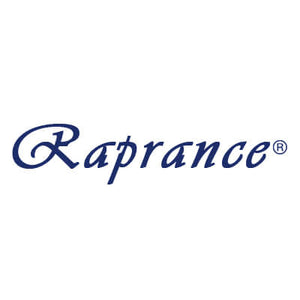
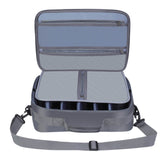
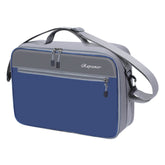
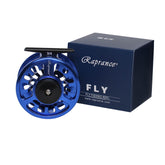
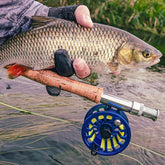
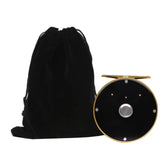
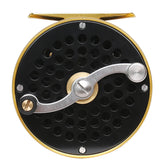
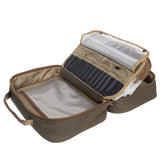
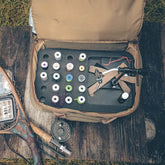
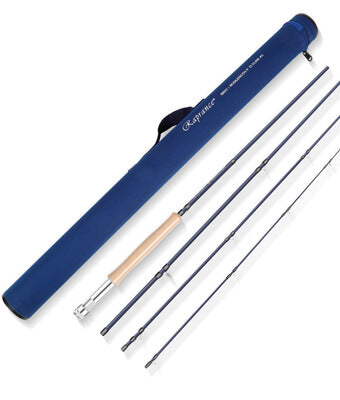


Leave a comment
Please note, comments need to be approved before they are published.